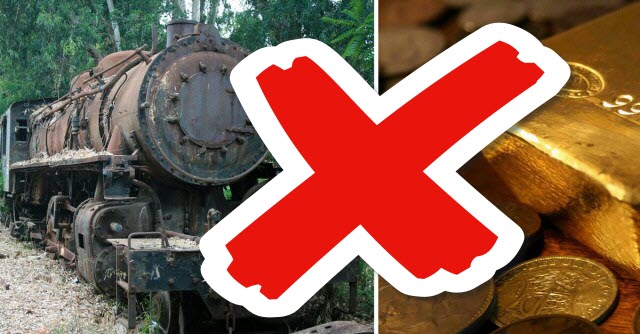Stories of hidden treasure abound and nearly every country in the world has at least one legend about a mysterious buried treasure. The Polish legend of the Nazi Gold Train contained elements of the very best treasure mysteries; evil dictators, hidden tunnels, and a legendary missing train.
The legend stated that in 1945, as WWII was drawing to a close, a local miner watched a group of German soldiers move a train laden with gold, art, and other valuables into a tunnel through the Owl Mountains, near the town of Walbrzych in south-western Poland. The legend continued to say that this Nazi loot had never emerged from the tunnel and was preserved, untouched, within the mountains.
This legend has always been deemed to have a nugget of truth in it, and as several caches of hidden artwork and other valuables had come to light, treasure hunters were convinced that this was no legend but a true story.
Two of the treasure hunters, a German, Andreas Richter and a Pole, Piotr Koper, had used ground-penetrating radar to survey the area at the Own Mountains in 2015. At a press conference, Koper said, “We carried out similar examinations in many other locations, but we have never encountered anything like this,” as he pointed to a series of round, rectangular and oval shapes seen in images taken with the ground-penetrating radar.
Janusz Madej, who led a team of Polish geologists and engineers and carried out similar tests at the same location said, “There may be a tunnel, but there is no train.” In spite of the evidence supplied by Koper and Richter, Madej firmly stated, “It’s human to make a mistake, but it’s foolish to stand by it.”
Unfazed by the negative publicity, Koper and Richter were determined to dig at their site and prove the naysayers wrong. They brought in heavy earthmoving equipment and set about digging at the site of the rail tracks that local residents had assured them was where the Nazi Gold Train had been spotted.
Despite digging three pits at the cost of $37,000 they have come up empty handed. A spokesperson for the project, Andrzej Gaik, told an interview with The Associated Press that there was “no train and no tunnel.” The mass that they had interpreted to be a train proved to be a natural rock formation created by underground ice.
The explorers may have come up empty handed, but the local towns have experienced their own mini gold rush. Tourists and the curious have flocked to the area, and the local economy has been boosted by the increased number of visitors. Arkadiusz Grudzien, a spokesman for the Walbrzych Mayor’s office, told an interview with the New York Times, “The publicity the town has gotten in the global media is worth roughly around $200 million.” As the town of Walbrzych has struggled with high levels of unemployment, since the coal mines in the area have shut down, this golden egg laid by a legendary goose has been a welcome means of creating new jobs.
Meanwhile, Koper and Richter have not given up completely and still have hopes of proving the rest of the world wrong. They intend to continue their search for the Nazi Gold Train in the area using smaller-scale probes. While there, they may find themselves driving around a roundabout that the mayor of Walbrzych, Roman Szelemej, has suggested be named in their honor, “in thanks for their services to our town.”
